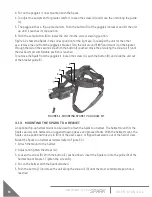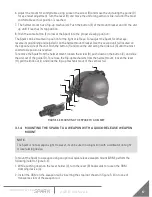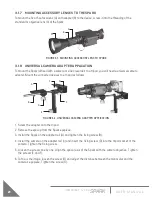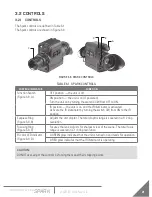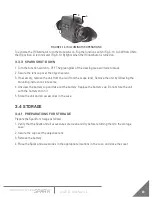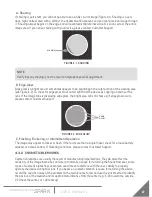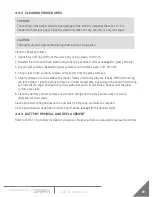
28
ARMASIGHT by FLIR
SPARK
U S E R M A N U A L
The following are examples of cosmetic blemishes:
A. Bright Spots
A bright spot is a small, non-uniform bright area that may flicker or appear constant (Figure 4-3).
Not all bright spots make the Spark rejectable. Cup your hand over the lens to block out all light. If the
bright spot remains please contact Customer Support.
Bright spots usually go away when all light is blocked out. Verify that any bright spots are not simply the
result of bright light in the area you are observing. Bright spots are acceptable if they do not interfere
with the user’s ability to view the scene or perform missions.
B. Emission points
Emission points are steady or fluctuating pinpoints of bright light in the image area that do not go away
when all external light is blocked from the objective lens (Figure 4-3). The position of an emission point
within the image area does not move. Not all emission points are cause to return the Spark. Verify that
emission points are not simply light sources present in the scene you are observing. Emission points are
acceptable if they do not interfere with the user’s ability to perform missions.
BRIGHT
SPOT
EMISSION
POINT
FIGURE 4-3. EMISSION POINTS AND BRIGHT SPOTS
C. Black Spots
Black spots are cosmetic blemishes in the image intensifier or debris between the lenses. Black spots
are acceptable as long as they do not interfere with the user’s ability to observe the scene. No action
is required if this condition is present, unless the spots interfere with the operator’s ability to perform
missions.
4.4 MAINTENANCE
4.4.1 GENERAL
The section regarding Spark operator maintenance consists of operational tests, inspections for the
unit serviceability, cleaning and mounting procedures, troubleshooting, and replacement instructions
for a limited number of parts. Maintenance instructions covered elsewhere in this manual (PMCS,
troubleshooting, etc.) are not repeated in this section.
CAUTION:
The Spark is a precision electron-optical instrument, and must be handled carefully at all times to
prevent damage to the device’s body or mechanisms.



